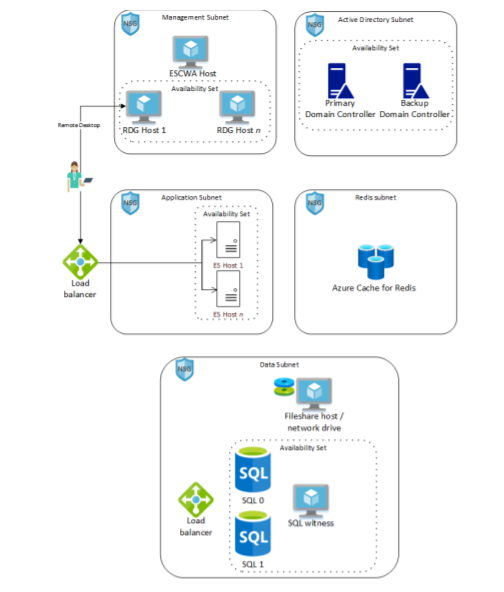Micro Focus Enterprise Server 5.0 Quick Start Template on Azure

One of the largest mainframe rehosting platforms is now available in the Azure Marketplace with an easy-to-deploy quick start template. Micro Focus Enterprise Server 5.0 enables you to run your IBM z/OS workloads on the less expensive x86 platform in Azure.
The Micro Focus Quickstart Architecture—the full explanation is in the Template whitepaper:
If you’ve been wondering whether to move your IBM mainframe workload to Azure, you can use this quick start template to experience a fully functioning production server for running mainframe applications. The temple creates all the Azure infrastructure you need, installs Enterprise Server 5.0, and sets up the BankDemo application, which uses COBOL, CICS, Job Control Language (JCL), and Virtual Storage Access Method (VSAM) files. You’ll see how easy it is to migrate and rehost mainframe workloads on Azure.
Many of our customers start their mainframe modernization efforts by rehosting applications on Azure using an emulation environment. Running Enterprise Server 5.0 on Azure is a great step if you want to deploy to Linux or Windows, integrate a mainframe application with newer technologies such as .NET and Java, or just take advantage of the scalability, flexibility, and business continuity that you get in the cloud.
Version 5.0 is the latest release and includes several enhancements such as the new Performance and Availability Cluster (PAC) for scale-out scenarios, which helps keep your resource use efficient on Azure. It makes maintenance easier, too. Additionally, the new Enterprise Server Common Web Administration (ESCWA) feature eases configuration, monitoring, and management of a distributed system using both a JSON API and a modern web interface.
Our team of Azure advisors worked closely with Micro Focus on this release and is proud to announce this offering.
Check out the Micro Focus whitepaper here: Micro Focus Enterprise Server 5.0 Quick Start Template.
Other leading Micro Focus products are available on Azure Marketplace, including Enterprise Developer for mainframe development, Enterprise Analyzer for mainframe COBOL, and COBOL Analyzer for COBOL on distributed infrastructures.
Published on:
Learn moreRelated posts
From Backlog to Delivery: Running Scrum in Azure DevOps
This is a practical, end-to-end guide to run Scrum with Azure DevOps — from backlog grooming through sprint delivery and continuous deployment...
Azure SDK Release (November 2025)
Azure SDK releases every month. In this post, you'll find this month's highlights and release notes. The post Azure SDK Release (November 2025...
Microsoft Purview: Information Protection-Azure AI Search honors Purview labels and policies
Azure AI Search now ingests Microsoft Purview sensitivity labels and enforces corresponding protection policies through built-in indexers (Sha...
Soluzione Earns Microsoft Solutions Partner Designation for Data & AI (Azure)
Soluzione has been a Microsoft partner for over a decade – a journey that began with Microsoft Silver Partnership, progressed to achieving Mic...
What’s New with Microsoft Foundry (formerly Azure AI Foundry) from Ignite 2025
Microsoft Ignite 2025 just wrapped up, and one of the biggest themes this year was the evolution of Azure AI Foundry, now simply called Micros...
